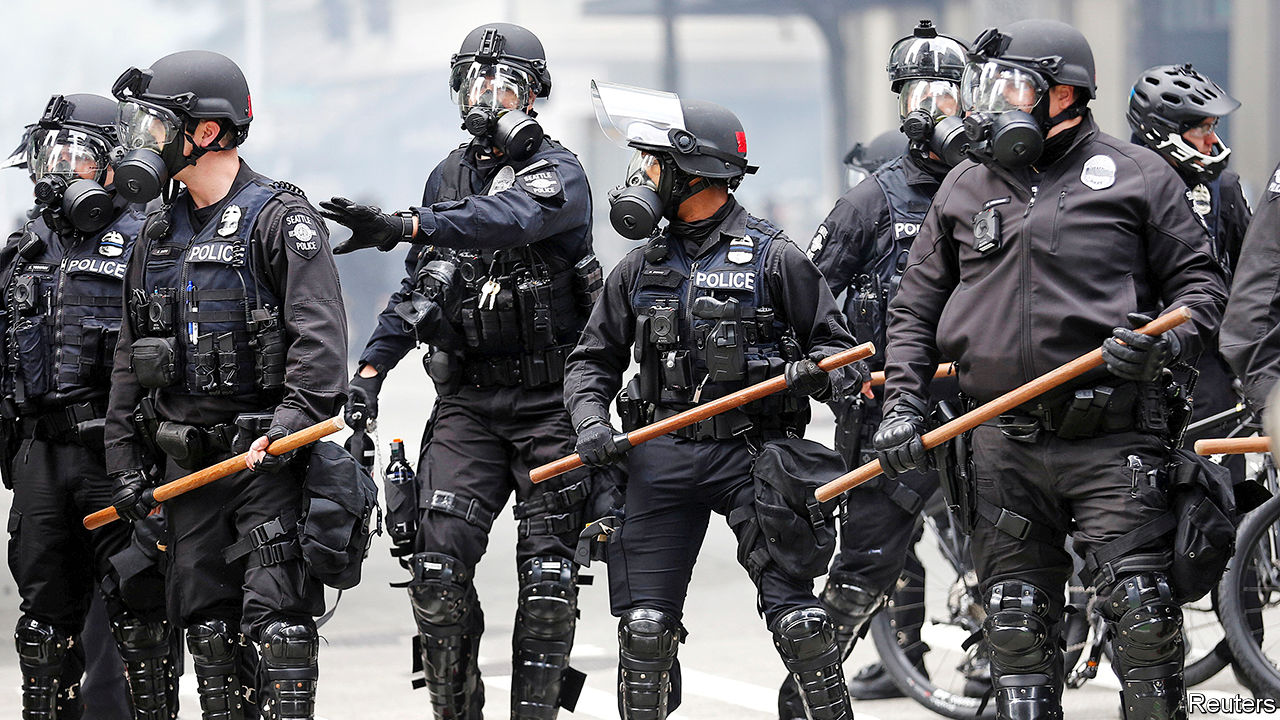
It’s Time for Uniform Use-of-Force Reporting
Issue Areas
Related Content
Recent calls for police reform emphasize the need for accountability in police use-of-force. Reforms including bans on specific policing tactics, restructuring the role of police unions,¹ and improving early warning systems² are based on the belief that these changes will create a policing environment that better protects citizens’ civil rights while maintaining public safety.³ However, debate about the effectiveness of these strategies is severely hindered by the lack of data.
Current data on police use-of-force is scarce at best.⁴ While we have consistent data about criminal activity at the municipal level for most departments in the United States through the FBI’s Uniform Crime Reporting program,⁵ there is no analog for police shootings or use-of-force.⁶
The lack of nationwide standardized reporting means that departments have neither the incentive nor the information to engage in local experimentation and then emulation of successful departments that is necessary for continuous improvement of policing. Policing is a complicated task that requires strategies tailored and tested at the community level. In order to create the conditions for improvement we must have a widespread, uniform use-of-force data collection and publication on par with that of the FBI’s Uniform Crime Report program.
OVERVIEW OF CURRENT USE-OF-FORCE REPORTING
Reporting on use-of-force can provide the incentives and information necessary for the continuous improvement of policing. Research on use-of-force reporting policies at the department level indicate that requiring officers to report each use-of-force incentivizes less force in policing, reducing both citizen complaints⁷ and the amount of force used in a given interaction.⁸
While the value of use-of-force reporting has long been established,⁹ states have been slow to require police departments to report use-of-force statistics to state agencies. In 2016 only four states– California, Colorado, Connecticut, and Texas–had laws requiring agencies to report use-of-force statistics to a state or federal agency.¹⁰
In 2016, the National Use-of-Force Collection Taskforce convened with a mandate to design and create a data collection system for the use-of-force by police officers in the United States. The taskforce launched the National Use-of-Force Database in January 2019 and intends to publish nationally aggregated data on police use-of-force in summer of 2020.¹¹ The database is a major step forward in the move to more transparency in policing, establishing incident-based reporting of all police and citizen interactions where a police firearm is discharged or serious bodily harm or death occurs in police custody. The database includes key incident context, citizen information and officer information.¹² However, if the goal is to provide local departments, citizens, and city officials the incentive and information necessary to find and advocate for effective policy, the current efforts have two major deficiencies:
- The FBI plans to report the data only as national summaries with no means of identifying statistics for particular departments, and
- Participation in the program is not consistent across local departments.
According to the National Use-of-Force Data Collection Pilot Study Summary published by the FBI’s Criminal Justice Information Services Division in December of 2018, the database reports will focus on “aggregate counts of incidents.”¹³ Without the collection and publication of standardized use-of-force statistics that allow comparison between department administrators, citizens, and the departments themselves are essentially in the dark with regards to the effectiveness of policing policies and strategies. This essential fact has long been recognized when it comes to the publication of crime statistics.¹⁴ For this reason, the FBI’s UCR can serve as a model for ensuring quality use-of-force data going forward.
HISTORY OF UNIFORM CRIME REPORTING PROGRAM
The Uniform Crime Reporting Program began in 1930 when the FBI was authorized to collect, publish, and archive statistics on criminal activity in the United States. The UCR program- consisting of four different data collections including summary crime statistics, incident-based crime statistics, hate crime statistics and statistics on violence against law enforcement officers- collects data from local, state, and federal law enforcement agencies in the United States. The program, while entirely voluntary on the federal level as the FBI does not have the authority to mandate data reporting from local or state law enforcement agencies, has an impressive participation of 18,000 state and local law enforcement agencies nationwide.¹⁵
In fact, participation in the FBI’s UCR seems to be driven by state law. According to a National Academies of Science report, “Modernizing Crime Statistics, Report 2: New Systems for Measuring Crime,” state law in 43 states requires local law enforcement agencies to report crime statistics to state law enforcement agencies or the designated UCR coordinator.¹⁶ While far fewer states mandate that state agencies transfer their data to the FBI, the national participation rate indicates that this is not a significant barrier to data collection.
It is clear that state law mandating crime statistics reporting is essential to a high participation rate of local agencies in the UCR program even as it is acknowledged that the collection of crime statistics is useful to local agencies in their efforts to ensure public safety. However, given both the costs of reporting and the inherent risks of publishing data that could reflect badly on the agency, mandates are essential to ensuring widespread, consistent reporting of local crime statistics.
POLICY PROPOSAL: MANDATE USE-OF-FORCE REPORTING BY ALL STATE AND LOCAL AGENCIES
We propose that state legislators mandate use-of-force reporting by all state and local law enforcement agencies in the state.
So that the National Use-Of-Force Database becomes a resource for improving policing we advocate following a strategy similar to that which mandates participation in the FBI’s Uniform Crime Reporting program. State legislators can use similar means as those currently requiring state and local agencies to report crime statistics for eventual transfer to the FBI’s UCR program including mandating reporting to state agencies and including reporting as a condition for state grants.¹⁷
POLICY PROPOSAL: MANDATE PUBLICATION OF USE-OF-FORCE STATISTICS BY STATE AND LOCAL JURSIDICATIONS
We propose that state legislators require timely publication of use-of-force statistics at the local agency level.
The FBI plans to publish use-of-force data annually as national summaries, with no agency-level reporting. This policy will largely render the collection of use-of-force data ineffective as it will be impossible to connect different policing policies, strategies, or environments with different use-of-force outcomes. Since, similar to the UCR program, the collection of all use-of-force data will be voluntary on the federal level, it is up to state legislatures to ensure that this effort will aid in creating a better policing infrastructure.
Only the transparency of timely, agency-level reporting of use-of-force statistics will create the information and incentives necessary for the continuous improvement of our police departments.
CONCLUSION
Our nation is at a critical juncture where the desire for better policing can overcome some of the challenges to a transparent and accountable police infrastructure. Policing is a difficult job and there are no easy guarantees when it comes to policies that will create police departments that are able to effectively protect civil rights, public safety, and officer safety. However, if we push for more and better data on policing strategies and outcomes, we can create an environment of continuous improvement where successful departments are emulated and their policies are widely adopted.
References
[1] Glock, Judge and Devon Kurtz. June 2020. “Reforming America’s Police Unions to Ensure Justice.” The Cicero Institute.
[2] Bui, Tiffany. (6/26/2020). “Would an updated early intervention system help MPD avert excessive force incidents?” Minn Post. Accessed 06/28/2020. Url: https://www.minnpost.com/metro/2020/06/would-an-updated-early-intervention-system-help-mpd-avert-excessive-force-incidents/
[3] Campaign Zero, a project of the non-profit We The Protestors, advocates 10 specific policing reforms including limits to police use of force, specific training requirements, and community oversight boards. https://www.joincampaignzero.org/solutions#solutionsoverview
[4] Adams, Kimberly. (6/1/2020). “FBI says new data on police use of force is coming this summer.” Marketplace. Accessed 06/26/2020. Url: https://www.marketplace.org/2020/06/01/fbi-police-use-of-force-database/
[5] https://www.fbi.gov/services/cjis/ucr
[6] As will be discussed subsequently, the national standardized use-of-force reporting system introduced in January 2019 does not have either the participation rate or the municipal level reporting of the UCR program. https://www.fbi.gov/services/cjis/ucr/use-of-force
[7] Cao, Liqun, and Bu Huang. “Determinants of citizen complaints against police abuse of power.”Journal of CriminalJustice28, no. 3 (2000): 203-213.
[8] Alpert, Geoffrey P., and John M.MacDonald. “Police use of force: An analysis of organizational characteristics.”Justice Quarterly18, no. 2 (2001): 393-409.
[9] The International Association of Chiefs of Police established the first use-of-force database in 1998 with anonymous, voluntary reporting by local agencies. Henriquez, Mark. (1999). “IACP National Database Project on Police Use of Force.” Use of Force By Police: Overview of National and Local Data, National Institute of Justice and the Bureau of Justice Statistics, pg.19. Url: https://www.ncjrs.gov/pdffiles1/nij/176330-1.pdf
[10] Lee, Trymaine and Safia Samee Ali. (11/15/2016). “Most States Spotty on Reporting Police Use of Force Data.” NBC News. Accessed on 6/26/2020. Url: https://www.nbcnews.com/news/us-news/most-states-spotty-reporting-police-use-force-data-n682711#:~:text=In%20four%20states%2C%20California%2C%20Colorado,California%20is%20a%20recent%20edition.
[11] Federal Bureau of Investigation, Criminal Justice Information Services. Accessed 6/26/2020. Url: https://www.fbi.gov/services/cjis/ucr/use-of-force
[12] Federal Bureau of Investigation, Criminal Justice Information Services. Accessed 6/26/2020. Url: https://www.fbi.gov/services/cjis/ucr/use-of-force
[13] Federal Bureau of Investigation, Criminal Justice Information Services. “National Use-of-Force Data Collection Pilot Study Summary.” Accessed 06/26/2020. Url: https://www.fbi.gov/file-repository/ucr/national-use-of-force-data-collection-pilot-study-121018.pdf/view
[14] In their article, “There and Back Again: Ensuring Law Enforcement’s Continued Support for Modernized Crime Data.” Sean Goodison Sean and J. Scott Thomson note the importance of agency level crime data for use in improving tactical success. Goodison and Thomson. (2017) “There and Back Again: Ensuring Law Enforcement’s Continued Support for Modernized Crime Data.” Criminology and Public Policy Vol 16(4). pg. 1102.
[15] Federal Bureau of Investigation, Criminal Justice Information Services. Accessed 6/26/2020. Url: https://www.fbi.gov/services/cjis/ucr
[16] Janet L. Lauritsen and Daniel L. Cork, editors. (2018). “Modernizing Crime Statistics, Report 2: New Systems for Measuring Crime,” National Academies Press, Washington DC. pg. 63.
[17] Some states like Alaska require reporting of UCR data as a condition of eligibility for state grants. Ibid. pg. 187.

Stay Informed
Sign up to receive updates about our fight for policies at the state level that restore liberty through transparency and accountability in American governance.
